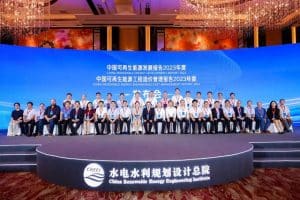The China Certified Emission Reduction (CCER) scheme refers to the greenhouse gas emission reduction effect of renewable energy, forestry carbon sinks, methane utilization and other projects in China, which can be quantitatively verified and registered.
CCER trading started in June 2012, when the National Development and Reform Commission issued the “Interim Measures for the Administration of Voluntary Greenhouse Gas Emission Reduction Trading”, proposing that after a CCER has been filed, it can be registered in the national registry and traded in the registered trading institutions to offset carbon emissions.
In March 2017, the National Development and Reform Commission suspended the acceptance of CCER applications due to “the small volume of voluntary greenhouse gas emission reduction transactions and the lack of standardization of individual projects”. After that, new projects would no longer be approved, but the old ones could still operate.
After the national carbon market officially started trading in 2021, whether and when CCER will be restarted has become a focus of the market.
In a recent article published by Ernst & Young (EY), EY Greater China’s Sustainability Lead Partner Tian Miaomiao shared her view on why the restart of CCER would be of great significance and how it could be improved. Her views are summarized below.
-Improve the carbon trading mechanism
CCER brings an offset mechanism to China’s carbon trading system that implements total cap control and provides companies with more options besides purchasing carbon quotas. Compared with quotas, CCER has a price advantage, which can reduce businesses’ compliance costs of emission control and improve the overall carbon market compliance rate.
-Expand the scope of entities participating in the carbon market
Taking the national carbon market as an example, currently the only entities that can participate in quota trading are emission control companies in the power generation industry. The CCER mechanism would allow more voluntary emission reduction project managers to participate in market transactions, increasing the volume of the carbon market and improving market liquidity.
-Broaden green financing channels for businesses
CCERs can be used as financial assets to participate in financial activities such as pledge trusts. For example, CNOOC Trust, owned by China National Offshore Oil Corporation (CNOOC), has established “China Ocean Blue CCER Carbon Neutral Service Trust”. Shanghai Pudong Development Bank, Shanghai Environment Energy Exchange and Shenergy Carbon Technology jointly completed the first Shanghai Emission Allowance (SHEA) and CCER combined pledge financing in the Yangtze River Delta region.
-Contribute to the achievement of greenhouse gas reduction targets
Under the CCER mechanism, more companies can use market-oriented means to actively participate in energy conservation and emission reduction, start to develop renewable energy, and rationally use resources to participate in CCER transactions to reduce corporate carbon emissions, thus helping the whole country to realize carbon neutrality.
According to Tian, considering the construction process of the national carbon market and the previous CCER development experience, the restart of CCER could be improved by the following three arrangements.
-Improving the examination and verification system
On the basis of a complete review system, Tian proposed to increase the proportion of high-quality emission reduction projects, give full play to the guiding role of policies, while driving the implementation of energy efficient conservation and emission reduction projects through market-oriented means.
-Continuing to improve the carbon trading market
On the one hand, transaction entities need to be more diversified to gradually include more industries and even introduce non-performing entities to enter the market for transactions, so as to increase market activity.
On the other hand, control of total carbon emission reduction and the allocation of carbon allowances can generate sufficient allowances and offset trading demands.
-Improving the legal protection of the carbon market
In March, the Ministry of Ecology and Environment released typical cases of carbon emission report data falsification, including carbon inspection agencies tampering with forged test reports, instructing and guiding the production of fake coal samples, obviously inaccurate verification conclusions, and other major responsibility issues.
The root cause of these problems is the lack of relevant laws on the current carbon market, which failed to guarantee the authenticity and reliability of relevant data from the legislative level. False carbon emission data will directly affect the orderly operation of the trading market, according to Tian, so it’s necessary to further improve the legislation of carbon market trading and ensure the effective coordination of the two mechanisms of carbon allowances and carbon offsets.



